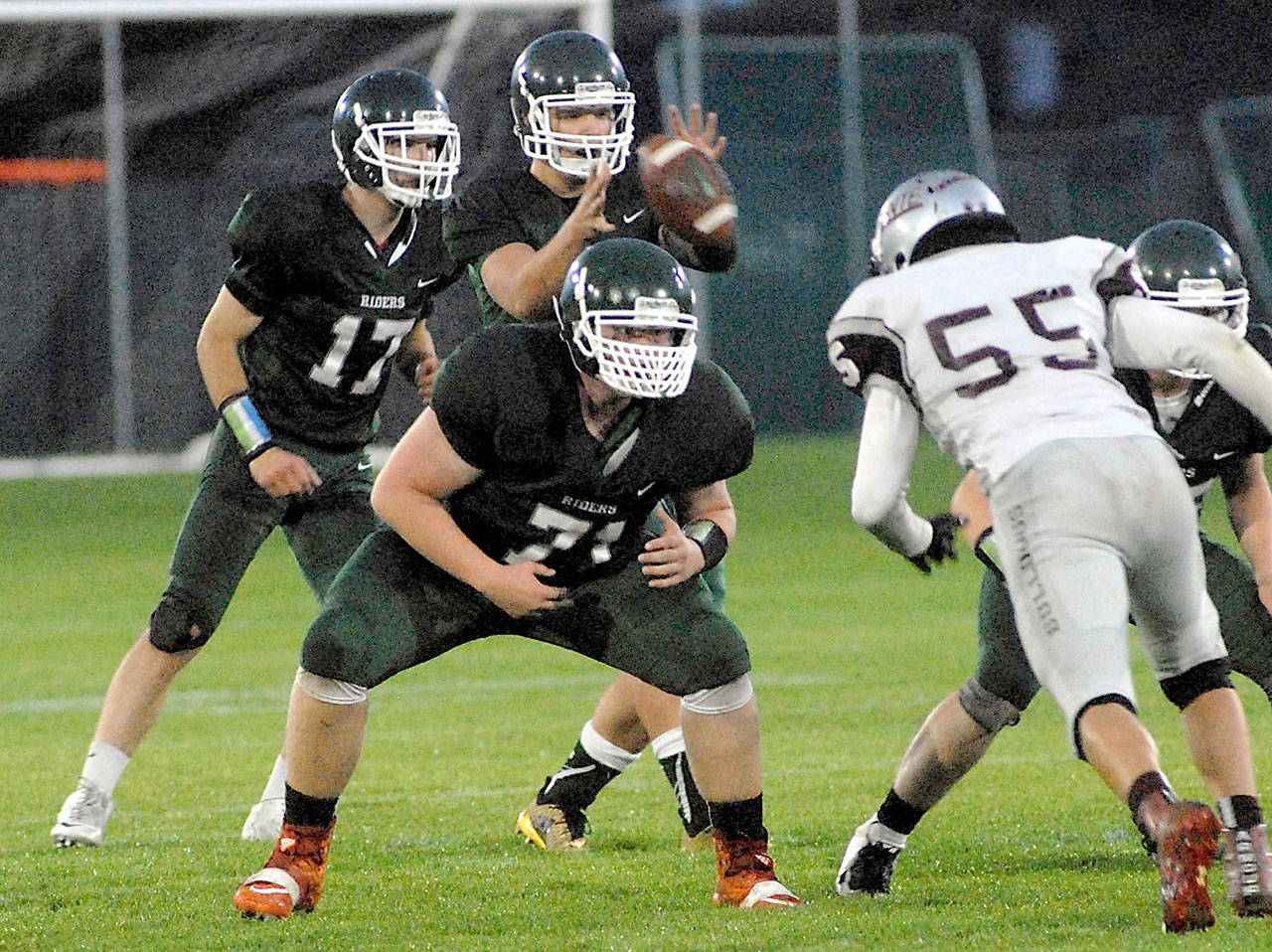RENTON — The Washington Interscholastic Activities Association Representative Assembly approved two amendments Monday that will impact the state’s athletic classifications beginning with the 2020-21 school year.
“This is the start of a discussion,” WIAA Executive Director Mike Colbrese told the Seattle Times. “This is the first necessary step. There is no perfect system.”
The 53-member board, made up of educators and administrators from around the state including Port Angeles School District Athletic Director Dwayne Johnson, approved changing state classifications from Class B through Class 4A from balanced percentages to hard-number caps at its Winter Coalition meeting in Renton. These classifications are based on a school’s enrollment numbers.
The new fixed classification are set across all six classifications: 1,300 or more students in ninth through 11th grades for Class 4A, 900-1,299 for 3A, 450-899 for 2A, 225-449 for 1A, 105-224 for 2B and 1-104 for 1B. Schools can still choose to opt-up in classification.
Because the classifications will be imbalanced, the number of state playoff berths for each classification could change, based on a 4-to-1 (25 percent) ratio of schools per classification. Some classifications could have more berths to state than others (For example, 80 schools in a classification equals 20 schools in a state tournament, 48 schools would have a 12-team state tournament.).
Assembly members also sought to address competitive imbalances in high school athletics by factoring in a socioeconomic component via approval of Amendment 4.3.0.
With this amendment to the WIAA’s rules, free and reduced lunch data reported by schools to the state Office of the Superintendent of Public Instruction will be used to determine adjusted enrollment levels with less-affluent schools eligible to drop down a classification in an attempt to achieve competitive balance.
Two changes to the free or reduced lunch amendment were approved.
Initially, a school had to be 10 percent above the state free or reduced lunch average of 43 percent to qualify and a school’s enrollment number would drop based on that percentage (if a school had 60 percent free and reduced lunch, its enrollment number would drop 17 percent).
This was changed, and schools that are any percentage above the state average could qualify to use the number to change its enrollment number (a school with 44 percent would drop 1 percent and so on).
A maximum of 40 percent of a school’s enrollment can be wiped out and a school can only drop one classification level.
“The data now shows to be involved and have some opportunity to be competitive is to address the socioeconomic situation in our communities,” Colbrese told the Times. “I think that amendment does that.”
The second change limits the amendment to affecting only Class 1A through 4A schools.
Class 1B and 2B schools argued against adopting the amendment at those levels due to concerns that it may negatively affect competitive balance amongst the state’s smallest schools.
This could have an impact on the classification status for Neah Bay High School, the 1B school with the largest enrollment during the current (2016-2020) enrollment cycle (81.49 students). Neah Bay Junior and Senior High School’s May 2018 report to the state Superintendent’s Office listed 62.4 percent of junior and senior high school students as receiving free or reduced school lunch which would have put Neah Bay in line for a 19 percent enrollment reduction.
But with the Class 1B enrollment cap lifted from 82 students to 104 students, Neah Bay likely will remain among the larger 1B schools.
There is some concern that Port Angeles could be in the Class 3A neighborhood, but Johnson is working on cutting a gap in free and reduced lunch numbers that exists between Stevens Middle School (where 51 percent of students receive assistance) and the high school (39 percent).
And a smaller-than-average class of current eighth-grade students will enter the high school next fall and should lower the Roughriders’ 9-11th grade count into safe 2A territory.
Sequim should remain a 2A school in the next cycle, while Forks could receive an enrollment reduction of up to 12 percent based on 2017-18 numbers. Becoming a 2B school would likely mean even more travel time and costs for the Spartans.
Port Townsend should remain a 1A school, but could be orphaned in the Olympic League 1A Division with Klahowya likely to be a 2A school by enrollment or by opting up and with enrollment continuing to decline at rival Chimacum. The Cowboys look likely to become a 2B school in the coming count.
Both votes passed easily, according to the Times. The classification amendment passed 31-3 and the free-and-reduced-lunch amendment passed 28-7.

